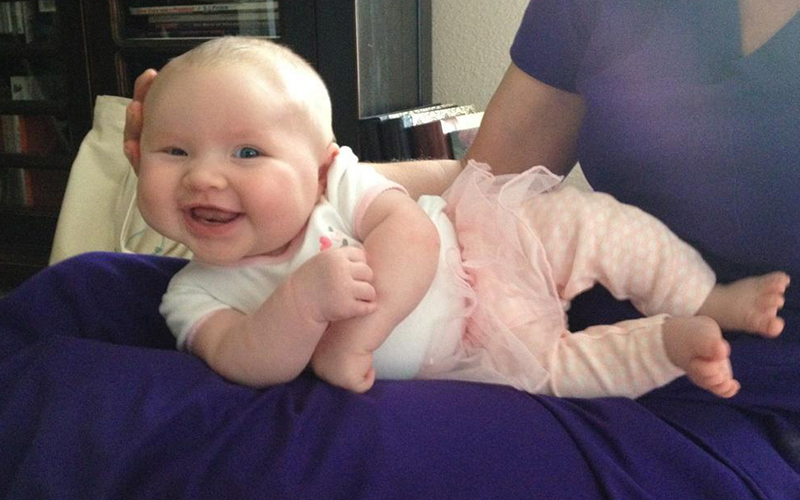Congenital Muscular Torticollis
Congenital Muscular Torticollis, which is commonly known as “twisted neck” or “wry neck” is a condition detected when an infant is born or sometime after birth. In this case the muscle within the infant’s neck is shortened that causes twisting of the neck. The term “congenital” means at birth it is present and “Torticollis” means neck that is twisted. On one side of the neck there is a contra-lateral rotation and lateral head tilt. In majority of the cases it is generally the result of the excessive contraction or thickening and unilateral shortening of the steronocleidomastoid muscle.
Causes of Congenital Muscular Torticollis
The actual cause of the Wry Neck or Congenital Muscular Torticollis is however not exactly known yet, but it may occur due to a difficult birth situation, especially in case of breech delivery, or “crowding” while the baby is still in the uterus. This causes an injury to the muscles of the neck that scars with time during healing.
During a fist time delivery, it has a higher chance since the uterus space is much tighter and thus the first new born is more likely to have a twisted neck or Congenital Muscular Torticollis.
Illustration: When the neck muscle that extending from the jaw bone known as mastoid to the breastbone and collarbone, the steronocleidomastoid muscle, is pulled or stretched, that may tear it, causing bruising and bleeding in the neck muscles. The injured muscle within the neck develops scar tissue or fibrosis that leads to tightening and shortening, making the infant’s head pull at one side. This fibrosis sometimes causes lumps or mass that can be sensed on the neck side.
Some kids those who suffering from Congenital Torticollis sometimes seen with a developmental dysplasia in the hip area. It is a condition where a thighbone isn’t attached firmly with the socket of the hip bone.
This muscular Torticollis can also occur later during infancy and childhood. Below are the symptoms of this Torticollis.
Symptoms of Twisted Neck
Congenital Muscular Torticollis or twisted neck may be either visible during birth or few weeks later. Here are the most common symptoms that may occur within infants with Muscular Torticollis but they may vary for each kid as per situation.
- Turning of the infant’s chin towards the other side of the head and the tilted chin touches the shoulder. In most cases the affected side is the right part of the neck.
- One side tilting of the kid’s head and this may cause the head to flatten as the child always places its head to one side while sleeping.
- During the first few weeks after birth, a lump may be felt within the baby’s neck in the affected part. Though this lump is not painful and gradually heals with time as the baby grows and before 6 months of age it goes away.
Treatment for Congenital Muscular Torticollis:
There are two ways the twisted neck can be treated; surgical treatment and non-surgical treatment.
Non-surgical Treatment:
-> The common treatment to Congenital Torticollis undergoes few exercise process for stretching of the sternocleidomastoid muscle. The exercise includes turning and stretching of the infant’s neck thus making sure that the chin touches each of the shoulder. It is include tilting of the head down to the shoulder to bring the ear on the unaffected area.
-> Stimulation in the infant to help in teaching the stretching and movement of the affected muscles.
-> There are few other methods that help such as; positioning toys where the child has to turn the head to look at the toys. In such case the parent has to carry the child in a position away from the toy, so that the kid has to bend their head in order to see them.
These exercises must be performed several times per day. Your consulted doctor and physiotherapist will guide you to perform these exercises for your child.
Surgical Treatment:
When non-surgical methods don’t work at that time surgical treatment is required. A survey says normally 10% of the affected infants need a surgical treatment for Congenital Muscular Torticollis. The operation is done once the child reaches pre-school age and not before that. Surgery includes correction and shortening of the bruised muscle. It’s not a critical surgery and you can take your kid back home the same day after being operated.
These are all about Congenital Muscular Torticollis or twisted neck. If you notice your child holding and tilting the head on one side then consult with your general paediatrician. Also question your general physician for particular symptoms of the occurrence of twisted neck or Torticollis. Your doctor will also go for other check up and examination such as; ultrasound scans, x-rays. They are for diagnosis of Muscular Torticollis.

